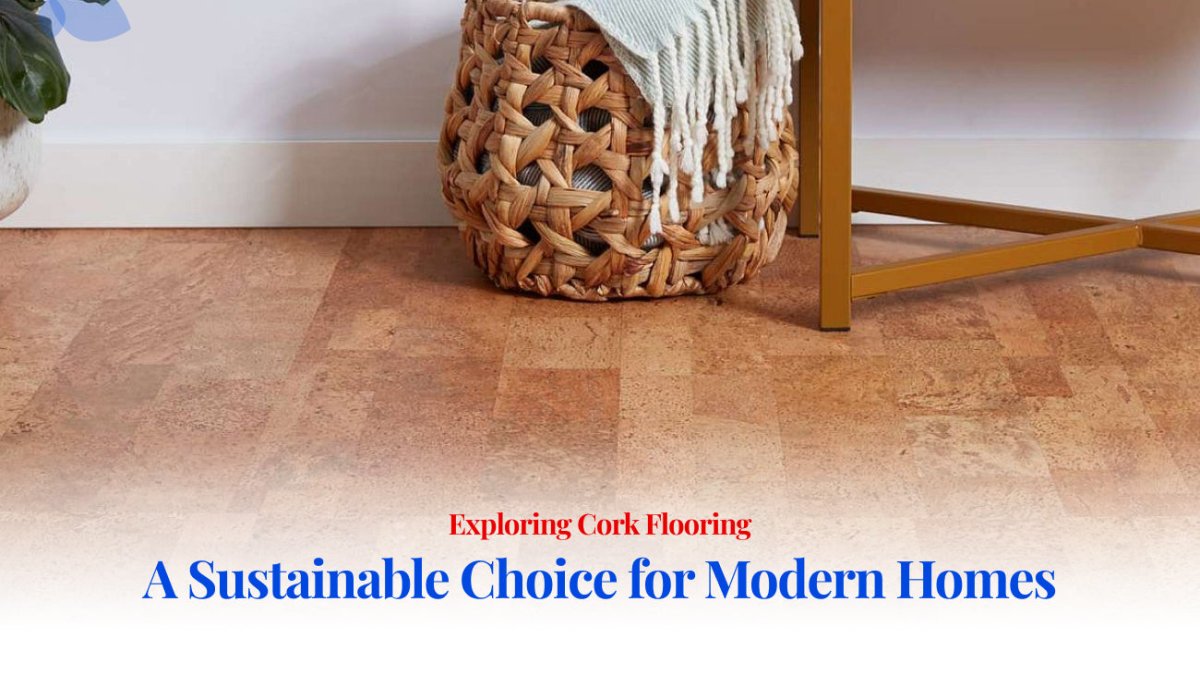When you choose cork flooring, you decide to invest in a long-lasting and visually stunning display of nature's splendor. This outstanding material shines out from the rest. Because the cork floor is composed of the regenerating bark of cork oak trees, it is not just comforting to the touch but environmentally friendly. Cork's cellular structure offers remarkable ease of use together with superior thermal insulation, keeping your house cooler in the summer and warmer in the winter. Its hypoallergenic qualities also make it a great option for those trying to make their house healthy.
Curious? Continue reading to learn how cork floor's unique appeal and excellent attributes might improve your living area.
What is Cork Floor?
Cork is an environmentally sustainable flooring option. It comes from the fibrous outer layer of cork oak trees. Mediterranean regions are the main habitat for these trees. This flooring type stands out from others due to its unique characteristics. It offers excellent sound and heat insulation, is environmentally sustainable, and feels delightfully smooth underfoot. Present-day architectural concepts increasingly embrace cork floors. They are quiet, soft, sustainable and give any place a cozy, hospitable atmosphere.
Types of Cork Flooring
Cork floors come in a variety of styles and installations:
- Floating Cork Floors: These cork floor tiles or planks click together and do not require nails or glue. They're ideal for a quick update over existing floors.
- Glue-Down Cork Tiles: These are glued directly to the subfloor. They are great for high-traffic areas due to their stability.
- Cork Rolls: Cork rolls are often used for underlayment. They work well for custom projects where cork tiles or planks might not be suitable.
Each type offers a unique aesthetic and functional fit for different spaces and preferences.
What Makes Cork So Special?
Cork's sustainability and versatility make it highly valued. The cork oak tree's outer bark is removed to extract cork, a wonderful natural resource. The tree is unaffected by this method and continues to grow and produce bark. Furthermore, the cellular structure of the cork gives it a soft cushion underfoot and a naturally robust and pleasant walking surface.
How is Cork Floor Made?
Cork floors are made in an environmentally non-detrimental way. The process is sustainable and intriguing. Several months are spent drying the cork bark once it is collected. Subsequently, it is cooked, crushed, and formed into sheets with the least amount of chemicals and additives.
Cork Flooring Pros and Cons
Pros:
- Eco-Friendly: Composed of renewable, natural materials.
- Comfort and Insulation: This material inherently cushions and provides noise and temperature regulation.
- Hypoallergenic: Cork is a fantastic choice for allergy patients since it repels hair, dust, and other tiny particles.
- Versatile: Cork floor comes in a wide range of hues and patterns. It can also resemble hardwood while maintaining its own texture and appeal.
- Fire Resistant: The natural capacity of cork to withstand flames can actually aid in containing a fire by preventing its spread. As a result, it becomes a safer flooring option.
Cons:
- Susceptibility to Damage: Can be dented by heavy furniture or pierced by sharp objects.
- Fading: Long-term exposure to sunlight may cause cork floors to fade.
- Maintenance: For cork kitchen flooring, sealing is required at regular intervals. This is done to maintain its resistance to wear and humidity.
- Cost: Cork is often more expensive than more traditional flooring options like vinyl or carpet. The initial installation cost may be higher since expert installation is necessary.
- Sensitive to Weight and Pressure: A cork may collapse with repeated pressure. This suggests that in high-traffic areas, it could show signs of wear and tear more rapidly than other flooring options.
How to Install a Cork Floor

- Acclimate the Flooring: Before placing the cork plank flooring, let it become accustomed to the room's humidity and temperature for a few days. Keep it in its designated installation location.
- Prepare the Subfloor: Preparation-wise, ensure that the subfloor is level, clean, and dry.
- Plan the Layout: Measure the area and plan the layout. This will reduce waste and ensure a visually pleasing configuration.
- Install: For floating floors that warrant no cork flooring installation cost, just snap the planks or tiles together at the edges. In cases when glue-down installations are used, apply adhesive. Then, carefully place the tiles on the flooring.
- Finish: Use high-grade polyurethane or similar material to seal the floor after installation. This will protect it from abrasion and moisture.
Ready to Rethink Your Flooring?
Cork flooring could be the refreshing, sustainable choice your home needs. Visit BuildMyPlace.com to explore our wide range of cork floor options. Not sure which one to pick? Schedule a video call with our experts today and bring new life to your floors with a touch of nature. Transform your space with BuildMyPlace, where innovation meets design.





